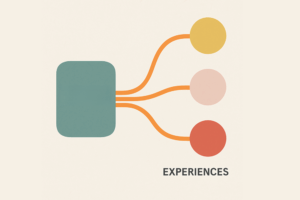
Defining Affective Experiences
How to Define Affective Experiences for Analysis: Striking the Right Level of Detail Cynthia Schuck-Paim & Wladimir Alonso The Welfare Footprint Framework (WFF) is designed to quantify the welfare impact
Poultry, encompassing broiler chickens, laying hens, turkeys, and other birds, represent the most widely farmed land animals across the globe. The sheer scale of poultry farming, with billions of birds under human custody, underscores the importance of addressing their welfare.
Recently, we had the opportunity and pleasure to attend the European Symposium on Poultry Welfare (ESPW) 2023. The event, held in Prague, brought together 220 stakeholders from 32 countries (including academics, industry professionals and advocates) to discuss and share research data and knowledge on poultry welfare, with topics ranging from welfare assessments, welfare challenges, fear and stress and best practices to precision livestock farming and sustainability in poultry production.
As part of our contribution to the symposium, we conducted a two-hour version of our workshop, ‘Quantifying Animal Welfare: The Cumulative Pain Framework’. We were pleased to see that the workshop attracted about 100 participants from diverse areas – from welfare scientists, to animal organizations to professionals from different industry sectors.
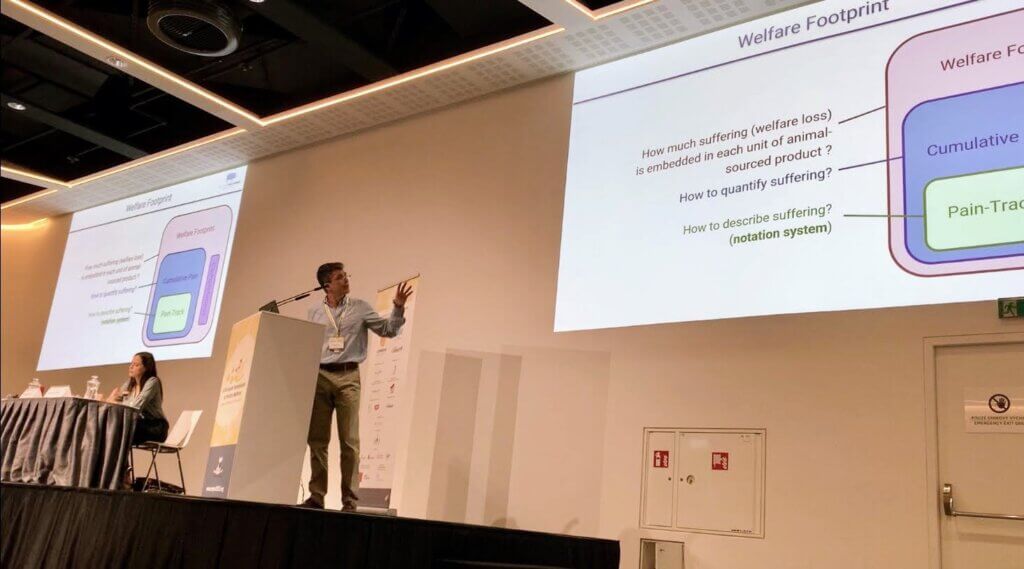
The workshop began with an interactive segment where participants answered questions related to welfare loss estimates via QR codes projected on the slides. Responses were then used to generate group statistics, providing a dynamic introduction to the workshop’s content. The feedback was very positive, and later followed by inquiries from a number of participants interested in hosting this workshop in their organization or institution.
We also presented the talk ‘Impact of the Better Chicken Commitment and Adoption of Slower-Growing Breeds on the Welfare of Broiler Chickens’, where we discussed that adoption of the Better Chicken Commitment is expected to reduce the time spent in Disabling and Excruciating pain by at least 66% and 78% , respectively.
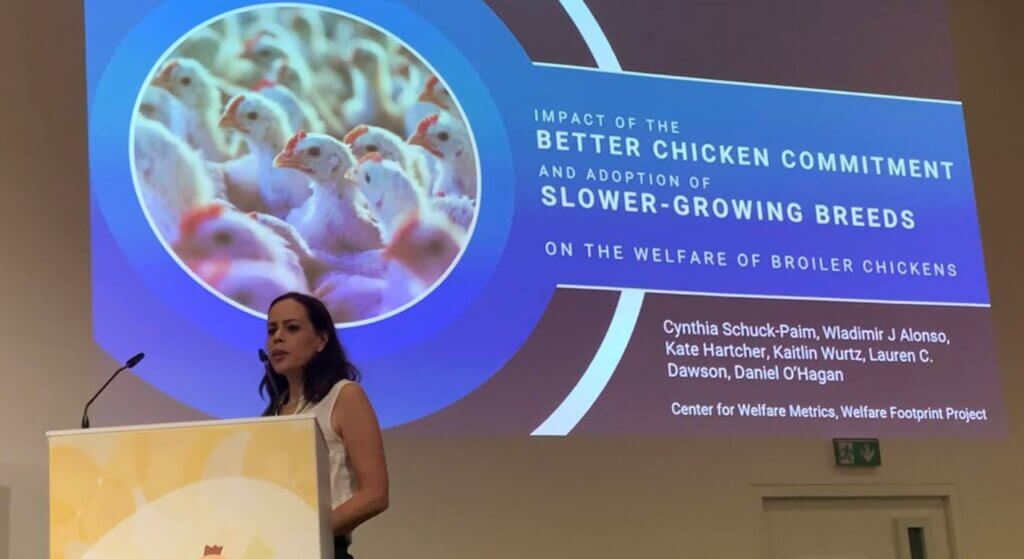
Two posters we are also presented, one on the ‘Quantitative assessment of the welfare impacts of methods for the commercial slaughter of broilers’ by E. Negro-Calduch, C. Schuck-Paim, WJ. Alonso, and another on ‘Research gaps in poultry welfare research’ by C. Schuck-Paim, WJ. Alonso.
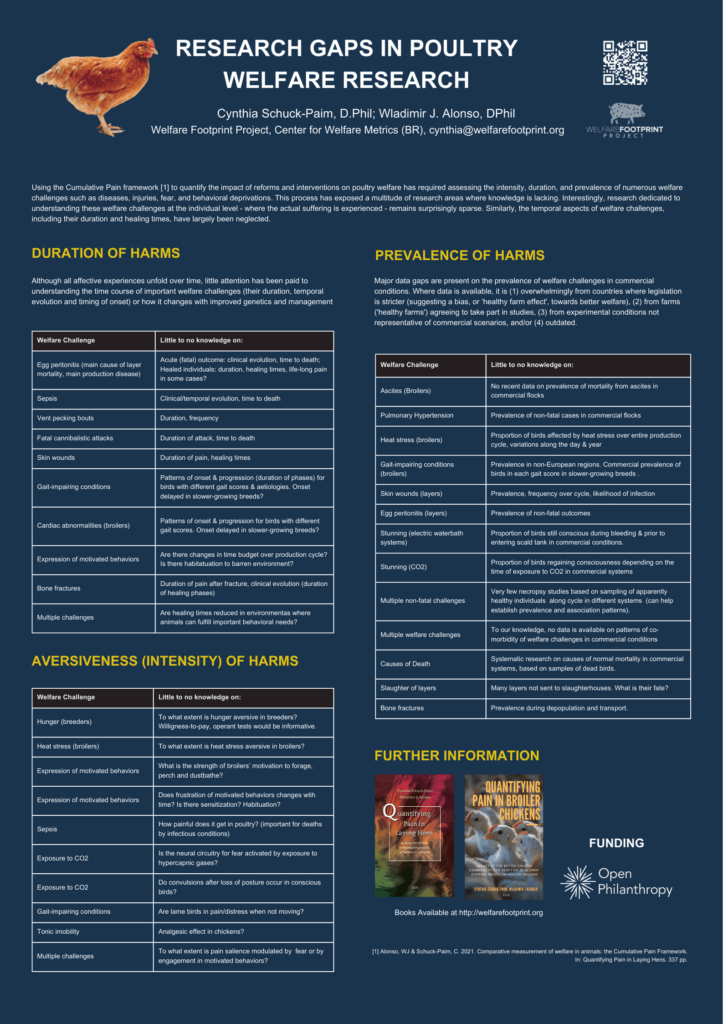
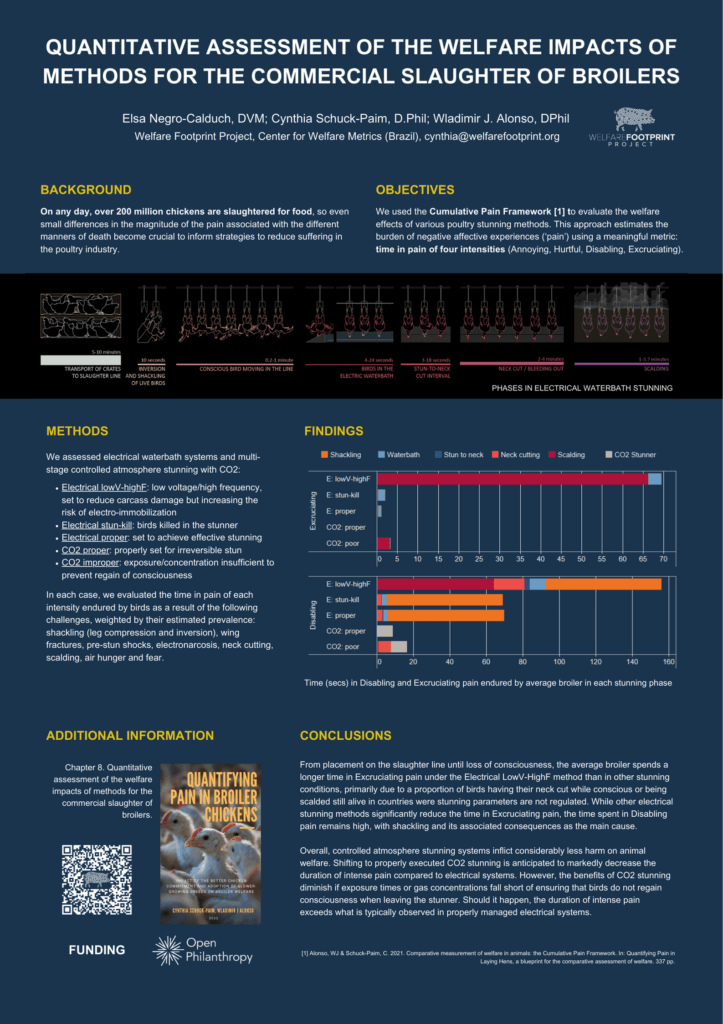
On the final day we had the opportunity to participate in a technical tour of the research institution of Ústrašice. Dr. Pavel Trefil organized the visit and Jan Tyl guided us through the institution’s work, where we had the opportunity to observe their research with different production systems, avian species and breeds. Of particular interest was the observation of the slower-growing broiler breeders of one of the breeds considered in the Better Chicken Commitment.
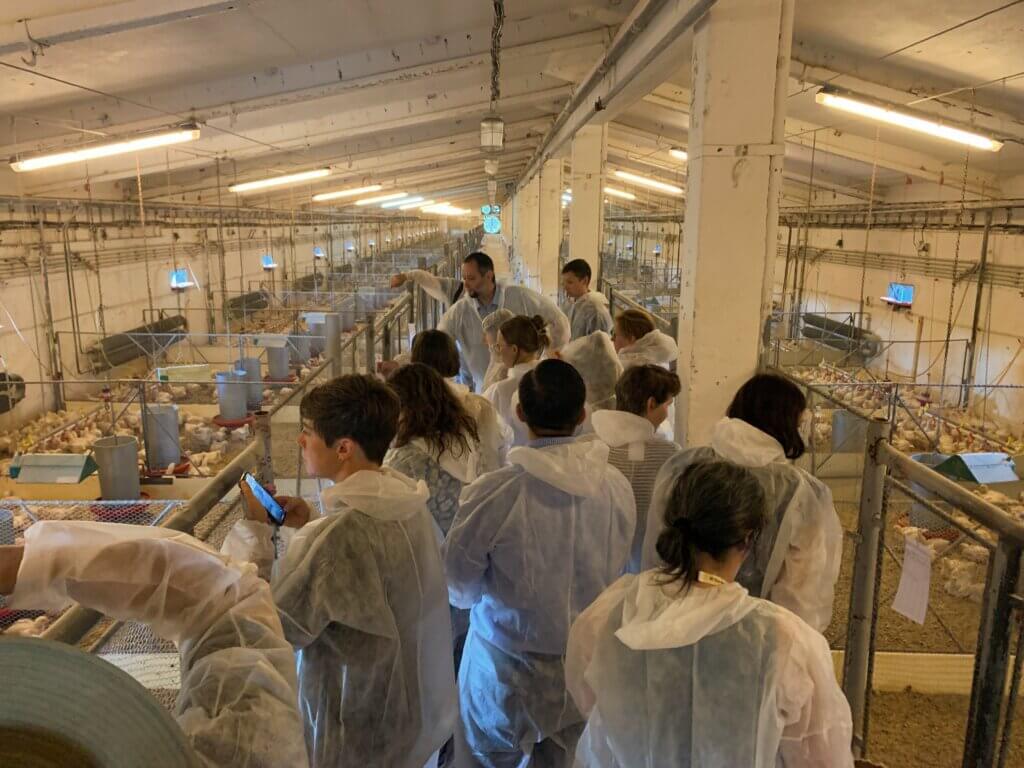
We are grateful to the event’s organizers, patrons and the many attendants with whom with could interact for this enriching experience. Considering the implications of the topics discussed at a global scale, it would be great if the Symposium could broaden its geographic horizons beyond Europe.


How to Define Affective Experiences for Analysis: Striking the Right Level of Detail Cynthia Schuck-Paim & Wladimir Alonso The Welfare Footprint Framework (WFF) is designed to quantify the welfare impact
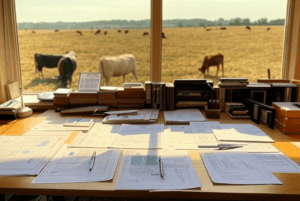
Confounding Factors in Welfare Comparisons of Animal Production Systems Wladimir J Alonso, Cynthia Schuck-Paim Controlled experiments—where variables are deliberately manipulated to establish cause-and-effect relationships—are the gold standard for drawing reliable
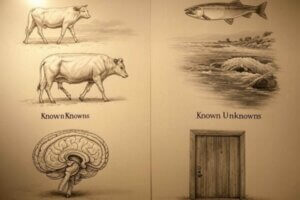
Borrowing the Knowns and Unknowns Framework to Reveal Blind Spots in Animal Welfare Science Wladimir J Alonso, Cynthia Schuck-Paim There is always a risk of fixating on what we already
